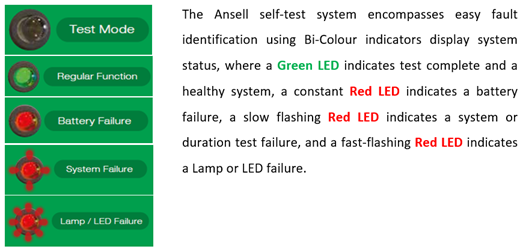Just in the process of changing 15 x 20 year old emergency lights. The new replacements are Ansell items
Ansell AGLED/3M
The very sparse instructions, accompanied by an equally sparse pictogram-style sheet, mention a self-test function, with a jumper switch to select self-test or non-self-test. and that is it. No mention of frequency of self test, nor what happens if the self-test fails. or even how a failed self-test is indicated - change of colour of the green led indicator to red? Who knows?
Anyone out there know any more?


